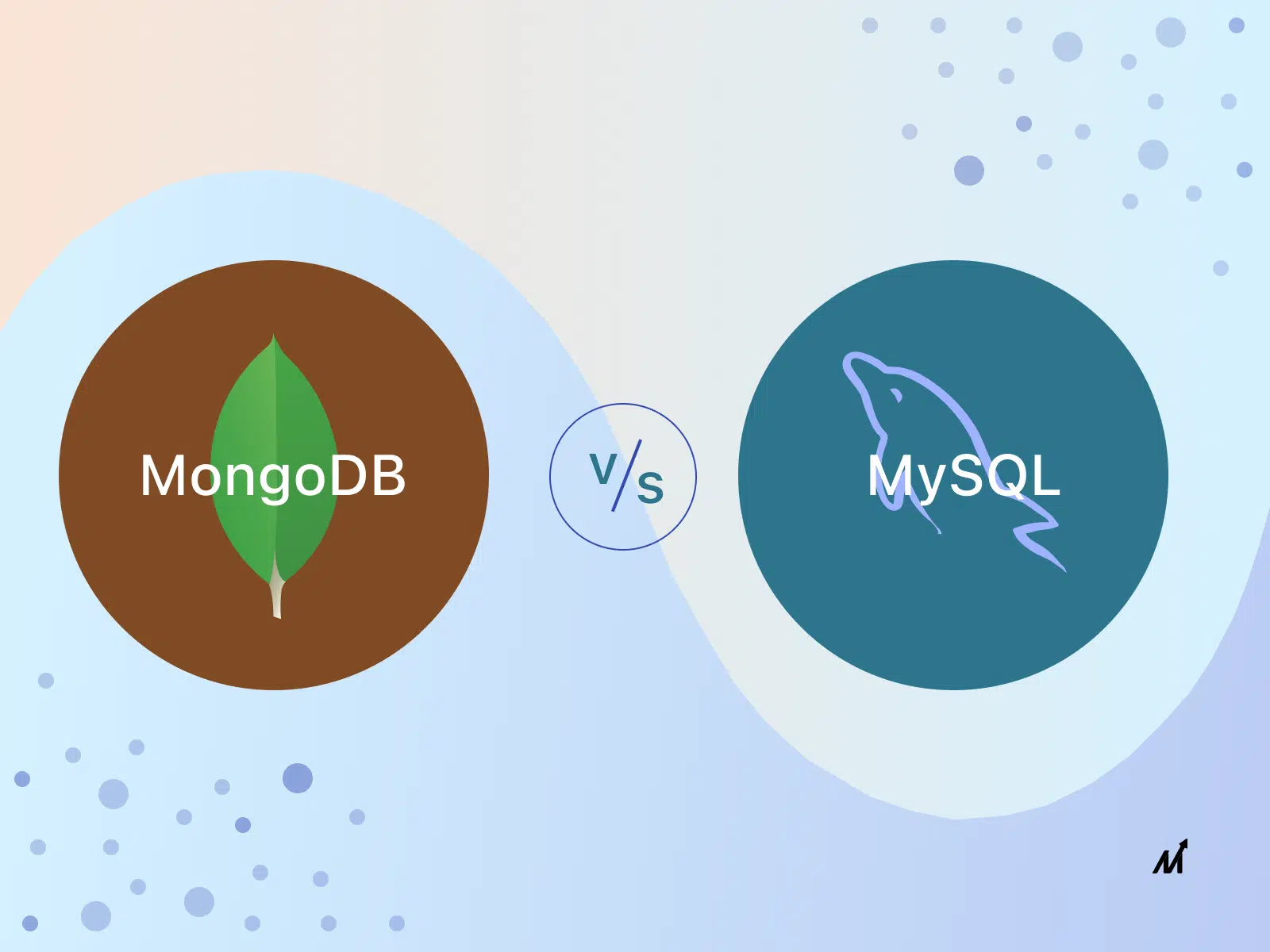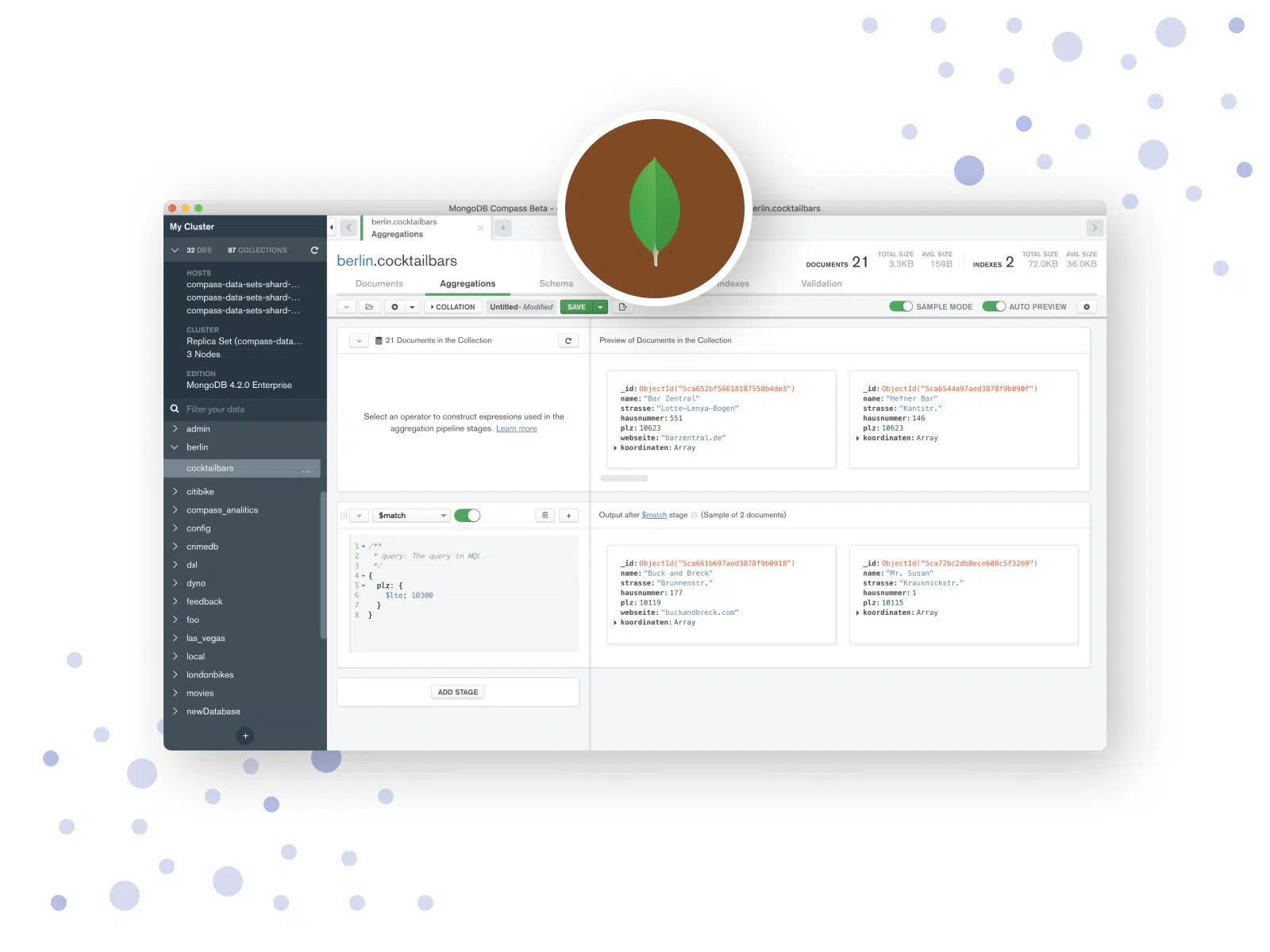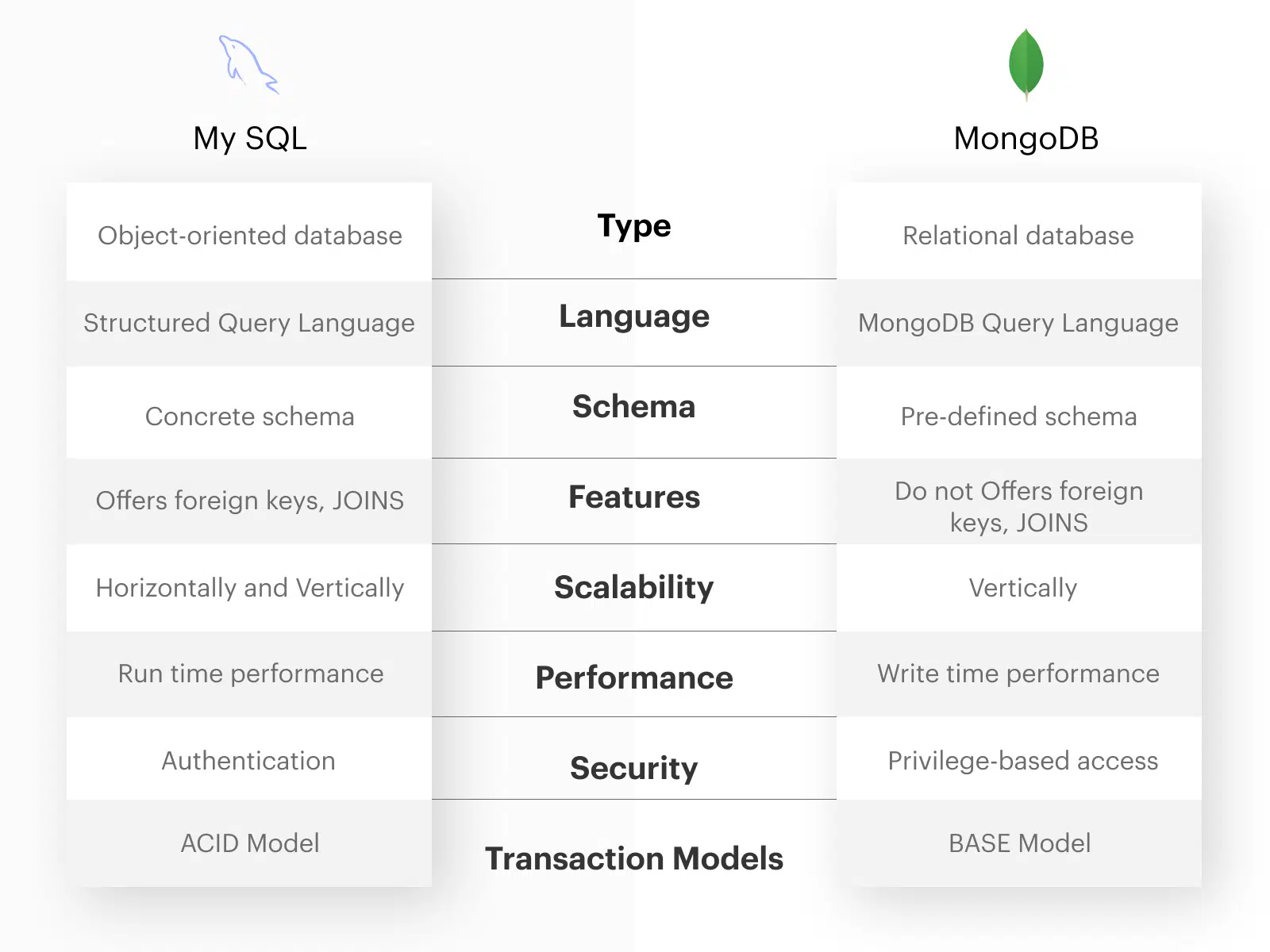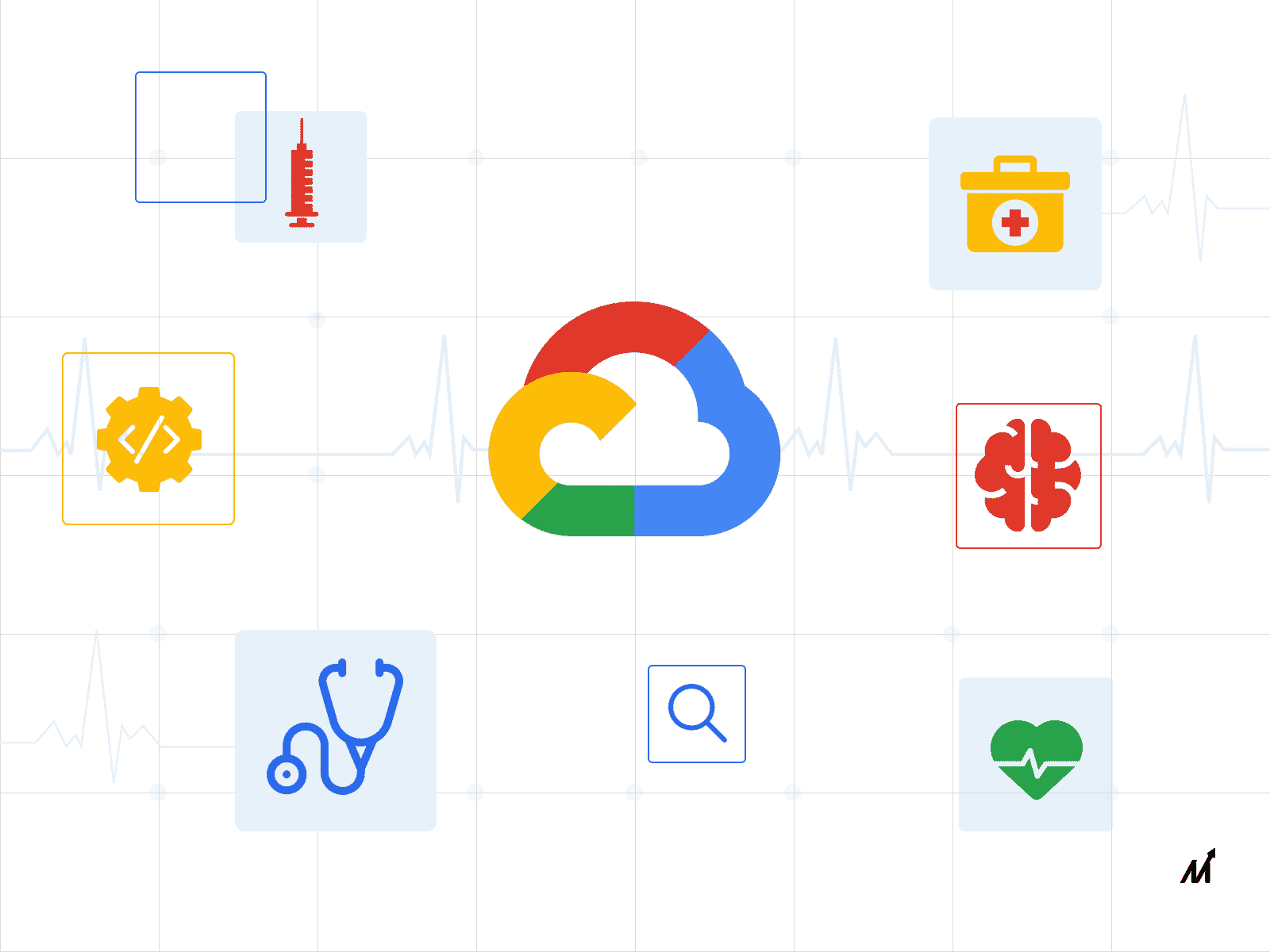Introduction
The whole world works around and on data. Every website we interact with, each app we enter our details on, the smart devices we use, and everything collects data related to us and our surroundings. Approximately 2.5 quintillion bytes of data are generated daily! Hence, choosing the right pick and evaluating the MongoDB vs MySQL performance might be challenging for businesses.
Data serves as a fundamental element used to extract further information through specific operations. For example, users clean, process, and analyze it to gain insightful output. Alternatively, they systematically store it as records in a database, enabling them to fetch, update, or delete it as needed.
The database plays a critical role by storing data for electronic access. Databases are ubiquitous for organizing recorded information for easy access, retrieval, management, and updates. Users access them with the help of DBMS (Database Management Systems), and designated individuals, known as DBAs (Database Administrators), oversee their maintenance and operation.
A Database Management Software ( DBMS) acts as an interface between the server and the client side and uses queries to interact with the database to search for, retrieve, fetch, or delete data. There are various kinds of DBMS: hierarchical, relational, network, object-oriented, and distributed. Some famous examples are Oracle, PostgreSQL, MySQL, etc. This article will explore MongoDB vs MySQL performance, two of the most popular DBMS.
What Exactly is MySQL?
When talking about MongoDB vs MySQL performance, it is crucial to understand and comprehend how MySQL helps enterprises. It is an open-source database management software developed by a Swedish company earlier and then handed over to Oracle in 2010, who forked this to create a new type, MariaDB. It is an avidly used RDBMS out there. More than 200,000 companies from various domains use MySQL. Relational databases use rows and columns, along with indexing, to store their data, which any language, particularly SQL, uses to fetch.
Supporting an extensive database of up to 50 million rows and more in a single table, the table’s actual file size limit is 4GB. However, you can increase this to a theoretical limit of 8 million terabytes.
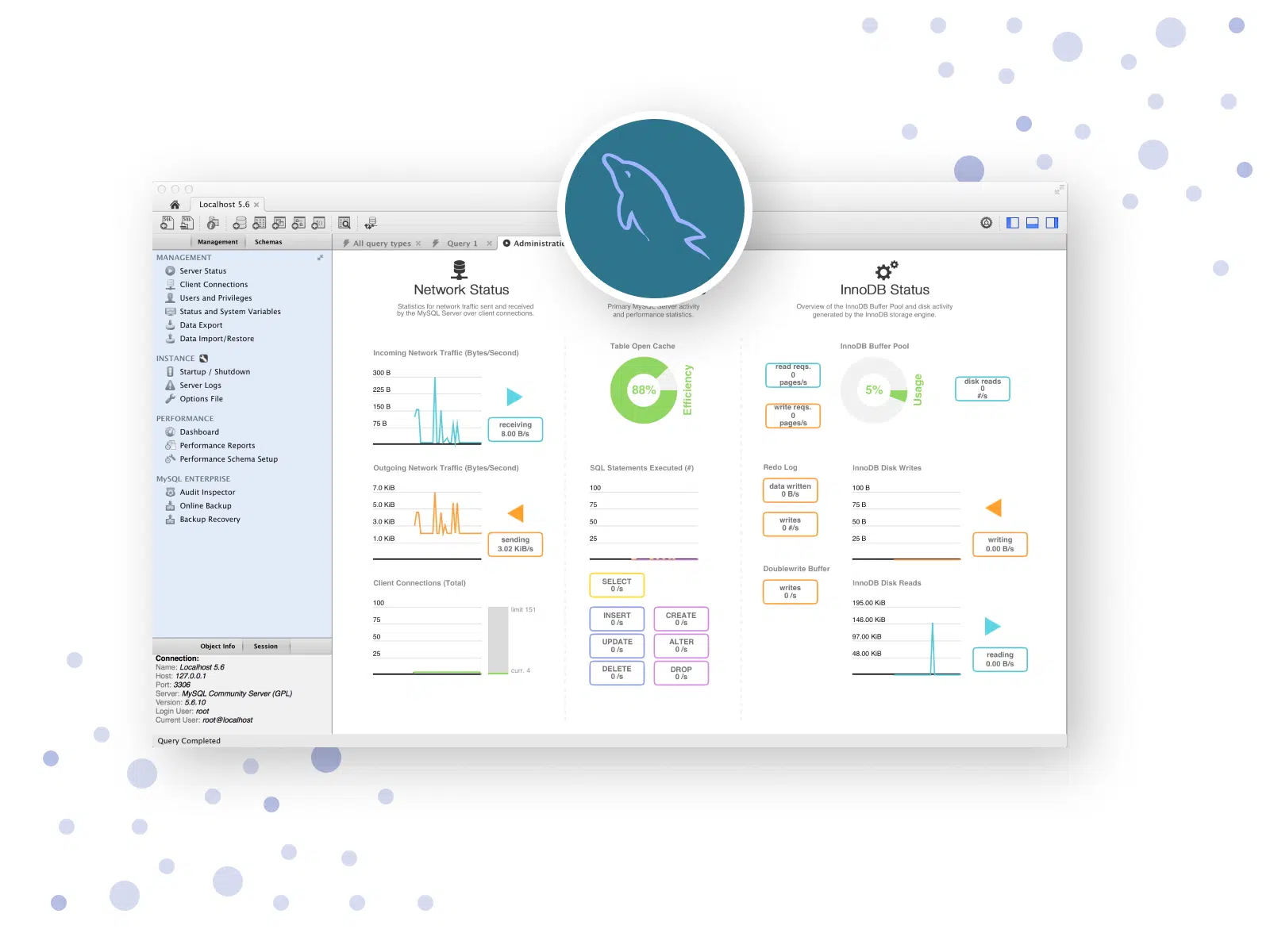
It is compatible with multiple operating systems and languages, primarily PHP.
MySQL GUI’s, such as SQL WorkBench, is used by the client to work with the server side. These are lightweight with limited functionality but help navigate and work with MySQL better without knowing the technicalities. It’s important to note here that there is a difference between both MySQL and SQL. MySQL is a popular RDBMS that uses the domain-specific SQL language to ensure communication between the client and the server.
MySQL allows users to build plenty of tables that help to store and manipulate data. It also aids in defining the relationship between each table. Some common SQL queries in MySQL are UPDATE, DROP, SELECT, INSERT INTO.
A few reasons why MySQL is an outstanding choice for enterprises is that it comes with a variety of third-party tools and APIs, along with administrative options. It also comes with an SSL layer which helps avoid data breaches and protects data transmission, thus increasing the security.
What Exactly is MongoDB?
MongoDB is also an open-source database management system that has NoSQL databases. This means that instead of storing records in relational tables, it supports other non-relational methods of storing different types of data.
The NoSQL system is among the most powerful available. The development of MongoDB started in 2007 as a PaaS (Platform As A Service) product, written in C++, JavaScript, and Python.
It comprises documents and data, which store the data entries in the form of field-value pairs in the BSON (Binary Javascript Object Notation) format. A collection is accountable for holding one or more BSON documents.
Fields can be considered columns concerning relational databases, whereas values can contain almost anything, from an array to an array of documents. A MongoDB document can include index fields with primary and secondary indices or indexes.
MongoDB is quite an in-demand choice for horizontal scaling, as it reduces the load on one particular instance and reduces downtime.
Since MongoDB does not have a pre-defined schema, it provides a more flexible choice for accommodating different data types and easier data search, integration, and database development.
MongoDB vs MySQL: Comparison
There are various factors on which we can compare MongoDB vs MySQL:
MongoDB vs MySQL: Type
MongoDB is an object-oriented database that is based on documents. It was designed to overcome some limitations compared to traditional relational databases.
MySQL is a relational database system storing data in all related tables. As a result, searching and accessing data in this form is much easier.
MongoDB vs MySQL: Language
MQL (MongoDB Query Language) is used by MongoDB, while SQL is used by MySQL ( Structured Query Language).
MongoDB vs MySQL: Schema
MongoDB does not require a pre-defined schema. Thus, different documents in a collection can have other structures.
MySQL requires a concrete schema, which is applied to all the tables in the database. This leaves no scope for flexibility in data structures in different tables.
MongoDB vs MySQL: Features
MongoDB does not offer features like foreign keys and JOINS, which makes it slightly less complex.
MySQL uses JOINS, foreign keys, and schemas to form a relation between different tables in the database and connect them.
MongoDB vs MySQL: Scalability
Developers can scale MongoDB both horizontally and vertically. This means that developers can add more nodes or MongoDB machines to the infrastructure, or upgrade the existing device to increase functionality and computing power.
MySQL can only be scaled vertically; a distributed architecture is impossible with this database system.
MongoDB vs MySQL: Performance
MongoDB has an excellent write time performance, i.e., the codebase requires less writing time, along with great speed due to secondary and master replication.
MySQL has a better run time performance, which supports joins across multiple tables.
MongoDB vs MySQL: Security
MongoDB has features that offer privilege-based access controls, along with supporting the TLS and SSL layer protocol.
MySQL, in addition to this, offers more security in terms of authentication and other things. Furthermore, the rigidity it holds ensures data consistency and reliability.
MongoDB vs MySQL: Transaction Models
MongoDB follows the BASE Model, which stands for Basically Available, Soft State, and Eventually consistent. However, it does not immediately result in data consistency as data is spread along different nodes in the cluster.
MySQL follows the ACID ( Atomicity, Consistency, Isolation, Durability). This ensures consistency for every transaction and offers higher security and a guarantee of error handling.
When to Use MongoDB?
MongoDB is quite flexible and cloud-based, making it more dynamic and suspectable to changes. As a result, developers can use it to create highly scalable and real-time-based systems. Therefore, for organizations who do not have concrete requirements yet, and who have services based on Geolocations, MongoDB can be a good choice.
Businesses use MongoDB for blogs, social networking sites, and e-commerce product catalogs. Enterprises with evolving needs and real-time analytics should also prefer this DBMS.
When to Use MySQL?
People use MySQL when they prioritize data integrity and security over scalability. One of the most common uses is for making web databases using the traditional LAMP stack. Data searching and accessibility are more efficient in this system.
Financial institutions widely use it for transactions because they require great accuracy and cannot afford data misplacement. Tech giants like Facebook and Twitter also use it for storing shop records, inventory, and school records. Developers prefer MySQL for building secure applications.
Can MongoDB Replace MySQL?
Considering the varied range of features MongoDB offers, it is possible that sometime in the future, it does become more in demand. For example, it can handle larger data sets, does not have schema restrictions, and offers higher scalability.
But, completely replacing MySQL is also not a wise option due to its limited data security and the chances of inconsistency in transactions.
Thus, MongoDB vs MySQL is an extensive topic, both having its pros and cons.
Markovate, as a product development company, helps your enterprise create dynamic applications and integrate flexible and large-scale databases to store and process a vast amount of data. We offer skilled developers to provide highly functional full-stack products and intelligent solutions to your business needs. Our backend engineers ensure you have the best technologies possible to integrate all the necessary features!
MongoDB vs MySQL: FAQs
1. MongoDB vs MySQL performance: Which is better?
It depends on the kind of requirements that you have. For example, businesses prefer MySQL for structured data due to its traditional approach, while they use MongoDB for unstructured data because of its effectiveness in real-time.
2. Which database is more secure: MongoDB or MySQL?
MySQL offers better security and keeps data priority as compared to MongoDB. At the same time, MySQL is less flexible than MongoDB as it has a perpetual schema design. Moreover, businesses with structured data can choose MySQL, while enterprises needing content management should opt for MongoDB.

